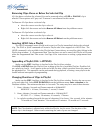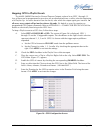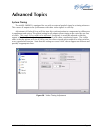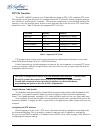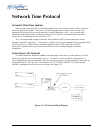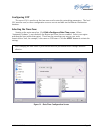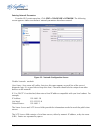
Page 74 MAXX-2400HD Owner’s Manual
FTP File Transfers
The MAXX-2400HD connects over Gigabit Ethernet using an RFC-1359 compliant FTP server.
File transfers to and from the server are managed from an FTP client file transfer program running
on a Windows® or Macintosh® computer. This provides a rapid way to execute drag-and-drop file
transfers; it can also manage many servers at once and does not tie up the server GUI, which may
already be in use. Table 2 indicates the supported FPT client list.
FTP Client Version Platform
Flash FXP 3.2.0 WINDOWS XP, WIN2K
DOS FTP 5.1.2600 WINDOWS XP, WIN2K
WS FTP 5.08 WINDOWS XP, WIN2K
Internet Explorer 6.0.2900 WINDOWS XP, WIN2K
Fetch 5.2 MAC OSX
CyberDuck 2.7.3 MAC OSX
Table 2 - Supported FTP Clients
FTP programs may also be used to move recorded or edited material between a server and
Network Attached Storage (NAS) or a DVD-ROM library.
From a networking or system-integration viewpoint, the server appears as a normal FTP server
in any size network, with the exception that it may only send, receive, or store video files that are
compatible with the server.
The server is designed to be used in a private dedicated video network. A firewall must
be used in systems that require internal security or connection to public networks.
Consult with a network security specialist for guidance on the best hardware,
programming and practices for your facility’s requirements.
Gigabit Ethernet Cable Quality
The high data rates generated by Gigabit Ethernet require high-quality cable designed for this
application. Low-quality network cables can result in high error rates and lower transmission
speed. For Gigabit operation, standard CAT-5 cable should be used only for very short cable runs.
New Category 5e (enhanced) cables ensure maximum transfer rates, and should be used as the
minimum standard. Category 6 cable is a good choice for applications where longer cable runs are
required.
Configuring the FTP Interface
Before logging in to the server’s FTP server, the network must be configured according to the
local network topology. This is primarily a matter of setting a static IP address or configuring
the server to use DHCP to obtain an IP address from a DHCP server. Refer to page 54 for details on
configuring the network settings.



